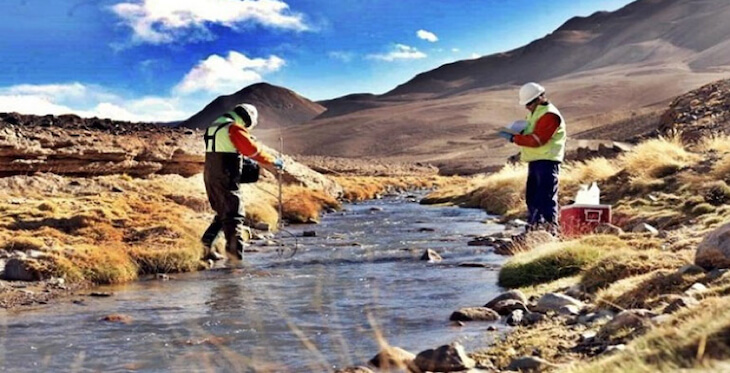A European project, recognized by the University of Huelva (UHU), seeks “greater efficiency” in the generation of mining waste and its disposal with the fin of “rescuing new elements that have to be valued in the future”.
Thus, and according to the UHU in a note, through the ‘Modular Recovery Process Services for Hydrometallurgy and Water Treatment’ (Morecovery), funded under the Raw Materials program of the European Institute of Innovation & Technology (EIT), researchers at The Department of Earth Sciences of the UHU José Miguel Nieto and Carlos Ruiz Cánovas intend “to improve the eco-efficient and sustainable use of natural resources by developing methods of concentration of rare earths”.
These are methods based on the passive treatment of acid mine drains with the DAS technology patented by the UHU, while achieving “greater protection of the environment and the ecosystems surrounding mining operations”.
During the project, a modular pilot plant developed by the leading partner – Geological Survey of Finland, GTK for selective hydrometallurgical recovery of rare earths using organic collectors such as the patented ‘CHCollector’, will also be installed in the Ciderta building of the UHU by the University of Eastern Finland.
The recovery processes that are intended to be carried out on a pilot scale may be transferred to the mining companies in the environment for their application on a larger scale, facilitating the treatment of waste generated and the recovery of critical raw materials in said waste, thus contributing “to a more efficient use of resources in a circular economy model”, as highlighted by the UHU.
The rare earth elements (ETR) are a family of 17 elements, the 15 lanthanides along with yttrium and scandium. They are used in the electronic and metallurgical sectors, as well as catalysts in, for example, the petrochemical and automotive sectors.
As explained by the UHU, its demand has increased strongly in recent years, especially associated with the great development of wind power generation technologies, electronic devices such as mobiles, ‘tablets’, plasma screens and electrical transport systems.
However, ensuring supply is “a problem”, as pointed out by the Huelva, since most of the rare earth elements are extracted in China, which has almost the monopoly of the world market, and its prices have risen “from drastic form. ”
According to a 2015 ITRE study, prepared by consultants from the Center for Strategy and Evaluation Services, European imports of rare earth elements represent approximately 8% of the total world demand, but in reality the quantity is greater, since They also arrive in the EU incorporated in products such as ‘smartphones’ and batteries.
INTERNATIONAL PARTICIPATION
In addition to the UHU, they participate in the project ‘Geologian Tutkimuskeskus’, GTK (Geological Survey of Finland), Finland (leading partner); the State Agency of the Higher Research Council (CSIC); LTU Business AB, Sweden; Savonia University of Applied Sciences, Suomen Malmijalostus Oy (formerly Terrafame Group Oy), and the University of Eastern Finland.
The European Institute of Innovation and Technology (EIT) is an independent EU body, based in Budapest, that “strengthens the innovation capacity of the Union”. It plays an “essential role” in supporting EU objectives related to the sustainability of economic growth and employment, as it allows entrepreneurs and innovators to turn their best ideas into products and services for Europe.
To date, the recovery rate of this incorporated material is “very low”, as indicated by the UHU. The ITRE analysis explains that technological SMEs can take advantage of this situation if they are involved in the development of innovative recycling technologies and processes or if they manage to provide R&D, engineering and technical support services to companies in the recycling and recovery sector to improve technology and process development.
Source: LaVanguardia

